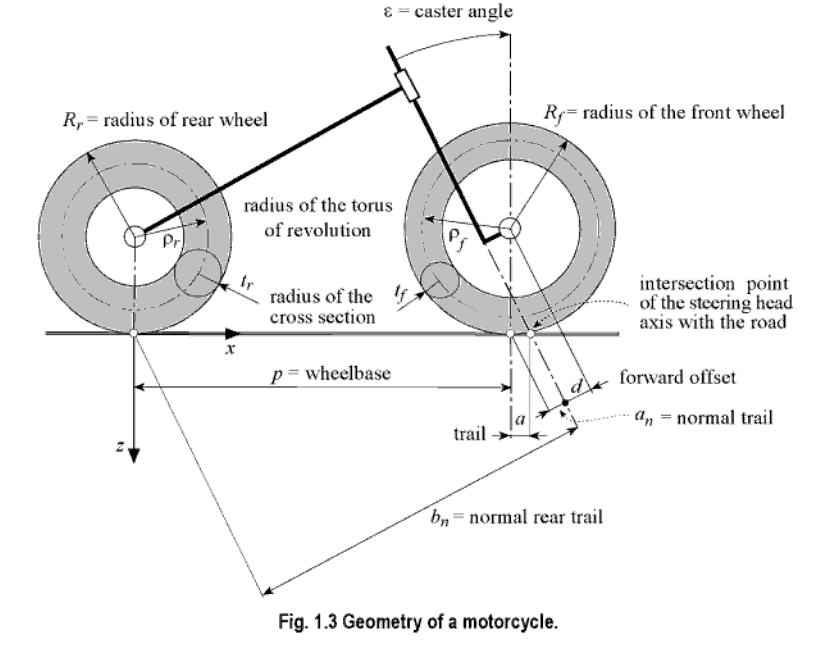|
Geometry |
 courtesy of the book Motorcycle dynamics |
Some
of the most important geometric consideration on a
motorcycle are the
|
| The importance of the geometry of a motorcycle is its ability to balance the rider and provide a means for which to perform. The angle of the trail and the caster play an important role in steering and stability allowing for more maneuverability and directional stability. The caster angle can very due to specific jobs, "Sport bike racing usually calls for an angle around 21-24 degrees of caster." (V. Cossalter.). The wheelbase is just as important for maneuverability; the longer the wheelbase the harder the bike will be to maneuver around close corners. Sport bikes are designed with a shorter wheelbase for tighter corners while drag bikes are designed longer with wheelbase, lower ground clearance and not much ability to take corners. Another crucial consideration is the suspension (its what keeps the rider from feeling the impact of every single rock one the road.), allows a sports bike racer to gain traction and stability in and out of a turn. When the motorcycle takes a turn it has a downward force (being the weight of the bike and the rider.), which is absorbed by the suspension system allowing more tire surface area to contact the ground, called squat. The weight of the forces have to be evenly distributed in order to maintain stability around the corner and into the accelerator on the other side of the corner. Proper suspension weight in sport racing bike will distribute the weight rearward to gain traction and maneuverability, too much can bring the front wheel off the ground and make for a less stable corner even cause the rider to flip or fall. |
 figure describing the three mail forces applied to the rear wheel that effect antisquat (from left to right.) Chain pulling, driving force, and weight transfer. courtesy of : http://www.sportrider.com/tech/146_0404_motorcycle_traction_geometry/ |
| Next Turning Reference page Home |